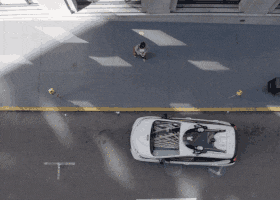California transportation authorities have allowed companies to transport passengers in fully driverless cars without a driver in the cabin and charge money for it. At the same time, even companies that have already been allowed to test drones on California roads will have to get separate permits to create an unmanned taxi service.
Today, there are two main problems on the way to the full use of driverless cars: insufficiently developed and cheap technologies, as well as legal obstacles due to the lack of adaptation of laws and regulations to driverless cars. The first problem has already been partially solved and some companies, for example, Waymo, have deployed relatively large fleets of dozens and hundreds of cars that regularly make trips without serious accidents (while the cost of sensors and computers for drones is still too high for the profitability of driverless taxi services). This creates a situation in which companies are technically ready to scale their technologies, launch even small taxi services to compensate for some of the costs and study the features of driverless transportation, but they cannot do this because of the laws. This hinders the development of driverless car technologies and delays their implementation.
Some US States have already started allowing commercial operation of drones. For example, Waymo has been charging money for trips in Arizona since the end of 2018. However, in California, which is home to dozens of self-driving car development companies, including leaders in this field, this was not possible until recently. Now the state's Department of motor vehicles (DMV) has removed that barrier by launching two driverless car programs. The difference between them is the presence of the test driver's: one of them implies that the driver is there and follows the movement, but the car is still basically goes offline, and the other resolves to refuse the driver, but requires the vehicle was under surveillance by the remote operator with the ability to intervene in management. Programs allow you to transport people individually or together with other clients, as well as charge them for services.
Along with rights, the new rules also impose obligations on companies. Among other things, they should provide a detailed description of approaches to ensuring safety, including epidemiological safety during the COVID-19 pandemic, ensure that at least part of the vehicles can transport people with disabilities and wheelchairs, and provide anonymized data on the trips themselves on a quarterly basis.
After the new rules were adopted, Waymo said it was going to launch its waymo One driverless taxi service in California in a short time. Shortly before that [...], a site with more than 50 company drones and engineers was spotted in San Francisco.
In Russia, the development of driverless passenger transportation is handled by Yandex, which already has two zones with the service of driverless taxi, as well as STARLINE and Taksovichkof, which recently announced the development of driverless taxis. Yandex also launched a drone testing program in the United States this summer, but plans to deploy a taxi service there are still unknown.
Gregory Copies

